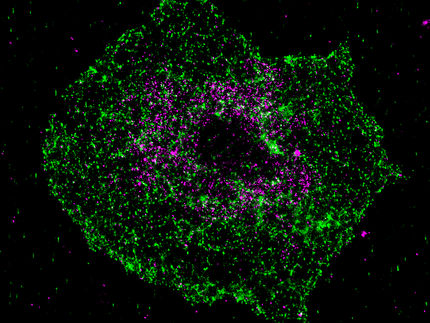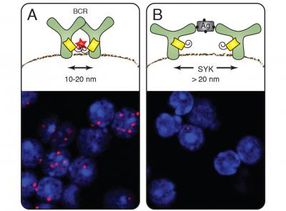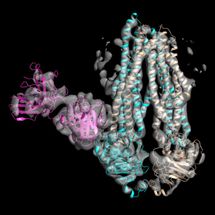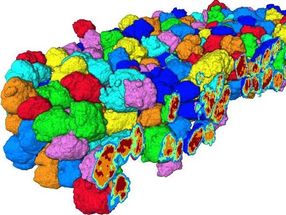Stiffening arteries could change cell behavior
Artery stiffness may change cell behavior and contribute to atherosclerosis, Cornell researcher finds
Advertisement
Scientists across Cornell are involved in the effort to combat heart disease and stroke in a variety of ways - from investigating its causes and contributing factors to testing possible pathways for treatments. Like skin that loses elasticity, blood vessels lose their pliability and stiffen with age. In more than half of the U.S. population over 65, this stiffening of the blood vessels is accompanied by a buildup of plaque inside arterial walls - atherosclerosis - which can lead to blood vessel obstruction, increased stress on the heart and the risk of a heart attack.
Researchers have long known that factors like smoking and high cholesterol intake contribute to the disease. But Cynthia Reinhart-King, assistant professor of biomedical engineering at Cornell, is investigating atherosclerosis from a different perspective - with hopes of finding new ways to treat it.
"Many scientists are very interested in the chemical factors that cause these plaque formations," she said. "What we're interested in is how the vessel stiffness changes the cells in the blood vessel and perhaps contributes to atherosclerosis."
To study the relationship, Reinhart-King, who is supported in part by an American Heart Association (AHA) Young Investigators grant, is observing how endothelial cells behave when attached to hard and soft surfaces. Specifically, she studies whether simply being attached to a stiffening artery - instead of a young, supple one - makes endothelial cells more susceptible to the buildup of plaque.
Her preliminary findings indicate that being attached to a stiffer blood vessel appears to reduce how tightly the cells that line the vessels attach to each other, which could make it easier for plaque deposits to form. In a system adapted in her lab that mimics conditions inside a blood vessel (without the dozens of confounding variables that exist in the body) Renihart-King grows endothelial cells on polymer surfaces that match the elasticities of a healthy or diseased artery wall. Using a technique called traction force microscopy, which measures the cells' response to the substrate, she then looks for differences in the way the cells adhere to the polymer, how they arrange themselves in response to blood flow, and how tightly they bind to each other.
Changes in the strength of cell-to-cell binding - or the permeability of the cell layer - are key, Reinhart-King said.
"Normally, endothelial cells form very tight connections and not much can get through them," she said. But in atherosclerosis, those connections break down and cholesterol deposits form under the endothelial layer.
If her lab finds a definitive link between the mechanics of the substrate and the permeability of the cell layer, researchers could use that knowledge to develop new therapies that target that response - instead of (or along with) therapies that seek to prevent vessel stiffening.
























































